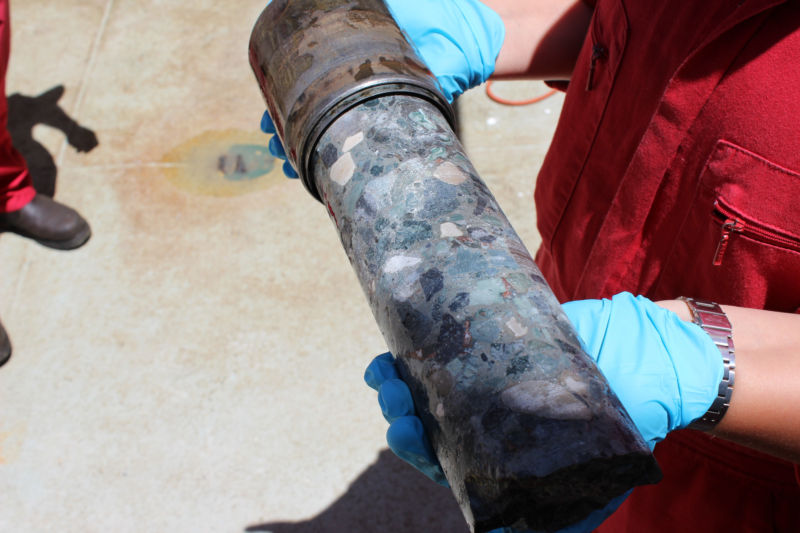How the dino-killing asteroid put a ring on its crater
Ars Technica » Scientific Method 2016-11-18

Enlarge / Smashed-up debris from the Chicxulub impact. (credit: ARae@ECORD_IODP)
When we look at the surface of other rocky planets, we see them pitted with the scars of violent impacts. Our own planet is not immune to these; Earth just heals better. Plate tectonics and an active atmosphere smooths over the inevitable nicks and dings. An academic side-effect of this resurfacing is that it is hard to study things like large impact craters here on the Earth.
Even though the primary force was downward, large impact craters actually sport a peak in the middle of the bowl. Really large craters get a raised peak ring instead. The basics here are understood: under the extreme conditions of a large impact, some of the rock in the center rebounds upward like the sploosh that follows the entry of a rock into a pond. But why does that singular peak turn into a raised ring in the biggest craters? That has been hard to figure out, and without examples of these craters to work with on the Earth, explanations have been difficult to test.
There is one huge impact crater with a peak ring here, though: the Chicxulub crater at the edge of the Yucatán Peninsula, left by the dinosaur-killing impact at the end of the Cretaceous Period. The Chicxulub crater is now mostly buried beneath the seafloor and hundreds of meters of limestone. But it was targeted for a major international drilling effort earlier this year, and the first study from that effort (written by a large team led by Imperial College London’s Joanna Morgan) tests explanations for the crater’s peak ring.